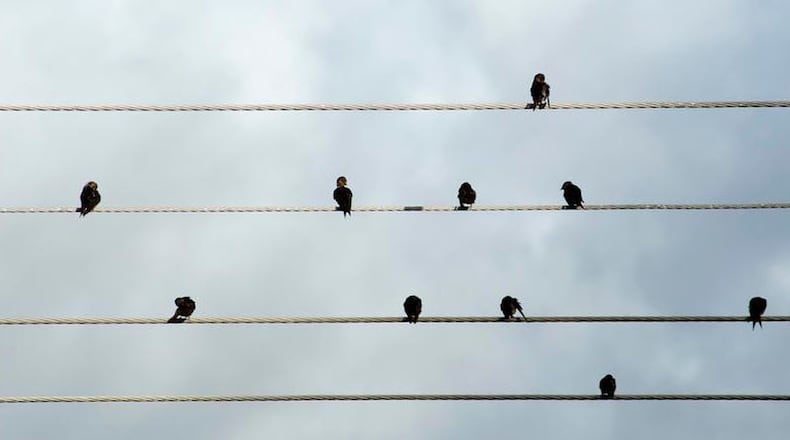You most likely have seen them while walking in your neighborhood or driving down the street: flocks of birds perched neatly in a row on overhead telephone and electric wires strung between utility poles.
The birds, usually blackbirds, crows, doves, starlings or pigeons, seem to be just sitting there watching the world go by. But if you look more closely, you may notice that the perching birds are nearly evenly spaced, as if each bird is politely observing the personal spaces of the birds next to it. Birds in large flocks may sit closer together, while those in small flocks may sit farther apart — but still giving personal space to each other.
Such behavior, which is most common in winter, has intrigued scientists. In a recent study, researchers at Rutgers University-Camden in New Jersey observed wire-perching birds for two years.
Their conclusion: The birds’ wire-perching habits may be similar to the way people interact with one another.
“It’s a lot like people standing in a movie line,” said Dr. Bill Saidel, an associate professor of biology who led the Rutgers study. “It’s an attraction. You want to talk to the person in front of you but you don’t want to be in their personal space … It’s the same thing with birds.”
Birds tend to flock in winter (non-breeding season) for safety and to forage for food. But what prompts the flocks to perch on utility wires? The answer is unclear, but it may be that the wires offer high vantage points and protection from ground predators.
Birds are able to avoid electrocution while perching on power lines if they only touch one live wire at a time. Touching two wires at a time allows electricity to flow through their bodies and electrocute them. Caution for people: Never touch a live wire or a power line.
IN THE SKY: From David Dundee, Tellus Science Museum astronomer: The Quadrantid Meteor shower, which typically produces 50 meteors per hour, will be visible this weekend. Look to the northern sky throughout the night.
The moon will be new tonight. Brilliant-shining Venus rises in the east a few hours before sunrise. Mars is low in the southwest at dusk. Jupiter and Saturn are low in the east just before sunrise. Mercury is too close to the sun for easy observation.
About the Author
Keep Reading
The Latest
Featured


